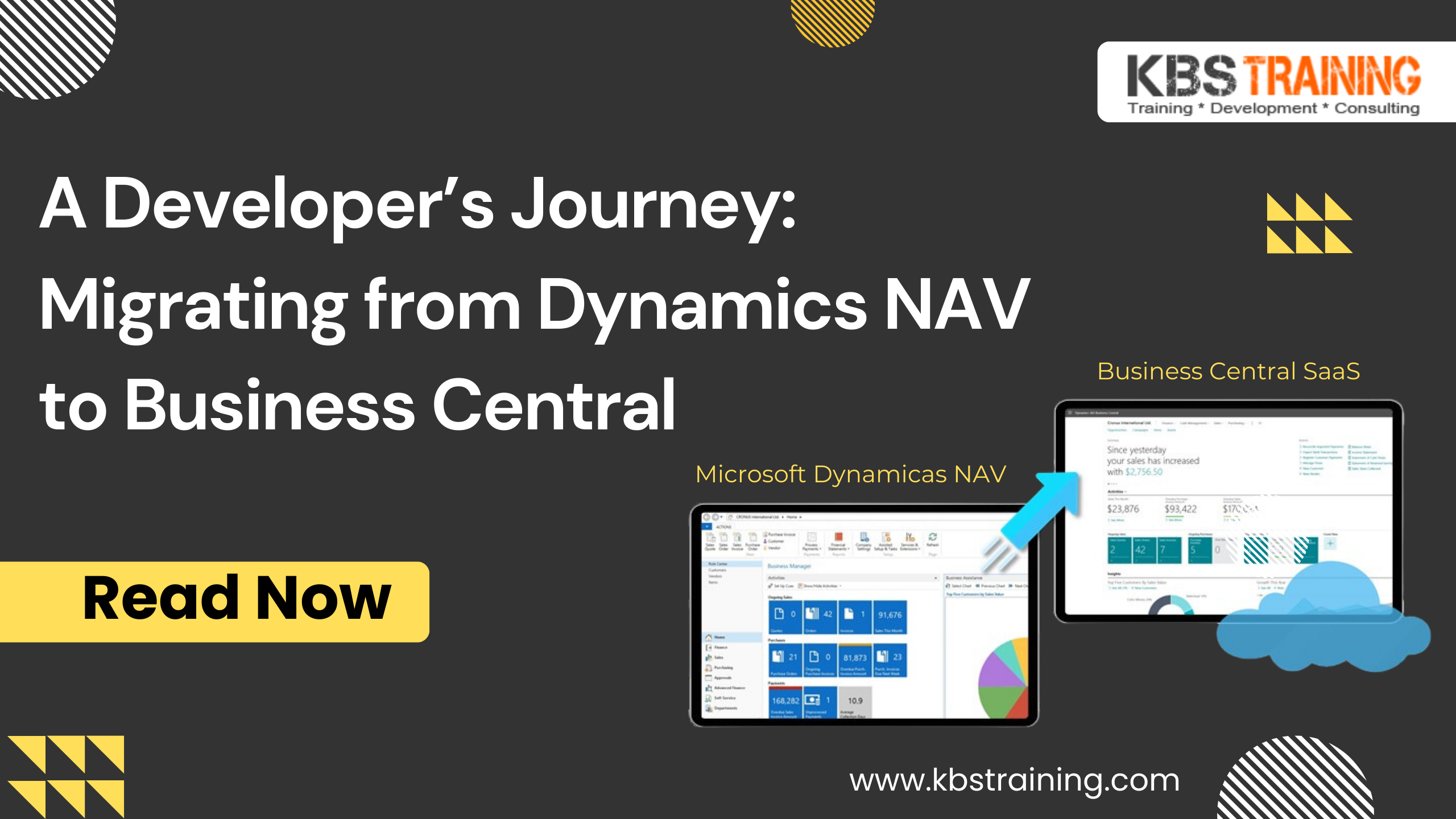Introduction: The Challenges & Rewards of Migrating from Dynamics NAV to Business Central
Moving from Dynamics NAV to Business Central is a significant shift for developers. The migration involves adopting cloud-based development, learning the AL language, and working with extensions instead of traditional customizations. While this transition presents challenges, it also opens up new opportunities for scalability, efficiency, and innovation.
This guide explores the key aspects of migrating from Dynamics NAV to Business Central, the challenges developers face, and the long-term benefits of making the move.
1. Understanding the Cloud Transition
One of the biggest adjustments when migrating from Dynamics NAV to Business Central is the shift to the cloud. Business Central primarily operates as a cloud-based solution, providing:
Automatic updates that reduce maintenance efforts.
Scalability to handle growing business needs.
Anywhere access for improved flexibility and collaboration.
💡 Cloud adoption ensures better security, lower IT costs, and faster performance.
2. Learning the AL Development Language
NAV developers are familiar with C/AL, but Business Central introduces AL, a more modern and C#-inspired language. AL offers:
Better readability and maintainability with an object-oriented structure.
Improved performance through event-driven programming.
Seamless integration with extensions and cloud-native development.
💡 Mastering AL is essential for developers aiming to build efficient Business Central applications.
3. Working with the Extension Framework
Unlike NAV’s direct code modifications, Business Central uses extensions to customize functionality. This modular approach provides:
Safer upgrades by keeping core system code untouched.
Easier deployment through AppSource and managed services.
Greater flexibility in customizing features without affecting the base system.
💡 Extensions simplify updates and ensure compatibility with future releases.
4. Leveraging Microsoft’s Power Platform
Migrating from Dynamics NAV to Business Central brings access to Power Platform tools, including:
- Power Automate for streamlining workflows and automating tasks.
- Power Apps for creating low-code, custom applications.
- Power BI for advanced data visualization and reporting.
💡 These tools empower developers to enhance Business Central’s capabilities beyond standard ERP functions.
5. Embracing Continuous Learning & Updates
Microsoft regularly releases new features, updates, and improvements to Business Central. To stay ahead, developers should:
Follow Microsoft documentation and learning resources.
Engage with the Business Central developer community for shared knowledge.
Experiment with new features to stay up to date with best practices.
💡 Continuous learning ensures developers remain competitive and proficient in Business Central development.
6. Migration Benefits: Scalability, Performance & Innovation
Despite the challenges, migrating from Dynamics NAV to Business Central delivers long-term benefits, including:
Improved system performance with optimized cloud-based processes.
Greater scalability to support growing business needs.
More development opportunities with a modernized ecosystem.
💡 Businesses adopting Business Central gain a powerful, future-ready ERP solution.
Conclusion: Is Migrating from Dynamics NAV to Business Central Worth It?
Although the migration process requires learning new tools and adjusting to cloud-based architecture, the rewards outweigh the challenges. Business Central offers a modern, scalable, and highly extensible platform, ensuring long-term success for developers and businesses.
By mastering AL, extensions, and Power Platform tools, developers can stay competitive and take advantage of Business Central’s powerful capabilities.
FAQs About Migrating from Dynamics NAV to Business Central
1. Why migrate from Dynamics NAV to Business Central?
✔ Business Central provides cloud scalability, automatic updates, and enhanced functionality.
2. What is the biggest challenge in migrating to Business Central?
✔ The transition from C/AL to AL programming language and working with extensions instead of direct customizations.
3. Can Business Central be used on-premises?
✔ Yes, Business Central offers both cloud and on-premises deployment options.
4. How does Power Platform benefit Business Central developers?
✔ It enables workflow automation, custom app development, and advanced analytics.
5. What resources can help developers migrate successfully?
✔ Microsoft’s official documentation, community forums, and Business Central training modules.
Consult Us Form: Click Here
Contact Us : WhatsApp
Register now for a FREE consultation to take your career to the next level
For Mail: Click Here | For More Info : Click Here
Visit Us & Follow us on Social Media :
Want to Learn More?
Microsoft Dynamics 365 Business Central Documentation
Best Practices for Business Central Extensions
Power Platform Integration for Business Central
Have questions? Drop them in the comments—we’d love to help! 😊

